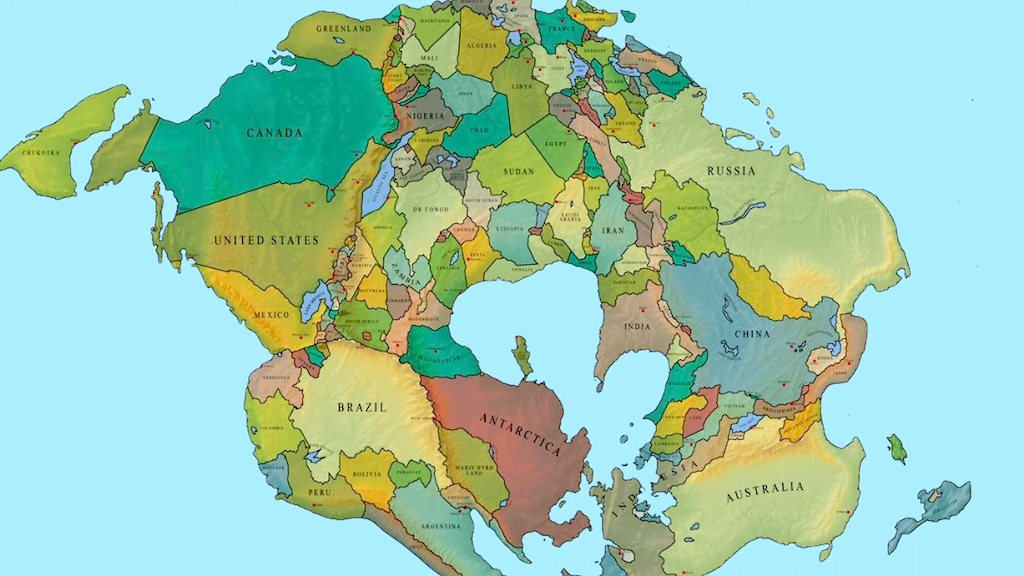What the World Might Look Like in 250 Million Years

Comedians Jay Foreman (previously) and Mark Cooper Jones of Map Men take a long-reaching look at what the current continents may look like in approximately 250 million years. Before looking forward, the men look at the history of tectonic plate shifting, such in the case of Pangaea. It's this specific history that informs what land masses might look like in the future.
There are several predictive models including Novopangaea, Aurica (where Eurasia splits in half and both the Pacific and Atlantic oceans close up"), Ultimate Pangaea (where Britain gets closer to America"), and Amasia (where all the continents congregate around the North Pole except Antarctica"). Of course, these models only guess at what might happen, there are no guarantees, however, that the Earth will last that long.
Related PostsA Fascinating Map Showing What Current International Borders Might Look Like in 250 Million YearsTom Scott Explains How Scotland and Newfoundland, Canada Were Connected 400 Million Years AgoA Fascinating Map of the Supercontinent Pangaea With Modern Day Country BordersWhat Might Happen If Every Single Human Who Ever Died Were to Suddenly Come Back to Normal LifeBlind and Partially Deaf British Man Has Traveled to 125 Countries in all Seven Continents Since 2001An Animated Timeline of Human Evolution Over Seven Million Years as Determined by Clue Giving FossilsOf course, wondering where countries will be in 250 million years assumes countries, and even humans will last that long. Right now, it seems the chances of us surviving more than a few metres of continental drift are incredibly unlikely as we grapple with overpopulation, climate change, pandemics, wars, pollution, and mass extinction. But if we do somehow survive and. find ourselves living side by side on a supercontinent packed with double-landlocked countries we're at least going to have to figure out how to be nicer to one another and extend the olive branch of human friendship.
Follow Laughing Squid on Facebook, Twitter, and Subscribe by Email.
The post What the World Might Look Like in 250 Million Years first appeared on Laughing Squid.